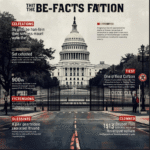Understanding Insurance Basics
Insurance serves as a safety net, offering financial protection against unforeseen events. At its core, it operates through a contract where the policyholder pays a premium in exchange for the insurer covering specific risks. The type of coverage you choose depends on your needs, but all policies share some common elements. A premium is the regular amount you pay to maintain the policy, while a deductible is the sum you’re responsible for before the insurer begins covering costs. Coverage limits specify the maximum amount the insurance will pay for a claim, which can vary by policy type.

Understanding the terminology used in insurance policies is key to navigating your options. For example, liability coverage typically pays for damages or injuries you cause to others, while comprehensive coverage can protect against damages unrelated to accidents, like theft or natural disasters. Policies often include exclusions, which are specific circumstances or events the policy won’t cover, so it’s essential to review these details to avoid surprises. Additionally, some policies offer riders or endorsements, which are optional features that enhance or expand coverage for an added cost.
Insurance companies use a process called underwriting to assess risk and determine your premiums. This process evaluates factors like your age, health, driving record, or property value, depending on the type of insurance. Understanding what influences your premium can help you manage costs. For instance, maintaining a clean driving record or improving your home’s safety features can sometimes lower premiums for auto or homeowner’s insurance.
Some insurance policies are legally required, such as auto insurance in most states, while others, like life or renter’s insurance, are optional but beneficial. Whether mandatory or voluntary, all insurance aims to minimize financial strain by transferring the burden of risk from the individual to the insurer. By familiarizing yourself with these basics, you’ll be better prepared to navigate the process and make informed choices when selecting a policy.
Assessing Your Insurance Needs
To determine the insurance coverage that’s right for you, start by evaluating what aspects of your life need protection. This might include your physical assets, such as your home or car, as well as your health, income, or the financial security of your loved ones. Think about potential risks and how insurance could mitigate them. For example, if you own a home, consider the cost of repairs or rebuilding in the event of damage. If you drive regularly, you’ll want to protect yourself against expenses arising from accidents or theft.

Your stage in life can also influence what type of coverage you prioritize. Young professionals often focus on health and auto insurance, while families may need more extensive life or disability insurance to ensure their loved ones are cared for in case of unexpected events. On the other hand, retirees might focus on long-term care insurance or protecting their investments and property.
Financial obligations are another key factor to consider. For instance, individuals with mortgages, car loans, or dependents may benefit from more comprehensive policies to safeguard against unexpected financial burdens. Similarly, if you’re self-employed or rely on a single source of income, disability insurance might be worth exploring to protect against potential income loss due to illness or injury.
It’s also important to weigh your budget against the level of risk you’re willing to accept. Higher coverage limits or additional features might provide greater peace of mind but could also result in higher premiums. Assess how much you can afford to pay monthly, as well as the potential out-of-pocket costs you’d face in the event of a claim. Balancing these factors will help you make a decision that aligns with both your financial situation and personal priorities.
Take the time to review any employer-provided benefits, as these can play a significant role in shaping your overall coverage needs. For instance, employer-sponsored health or life insurance may reduce the need to purchase separate policies. However, always ensure that these options offer sufficient protection for your unique circumstances. Customizing your coverage to fit your situation ensures you’ll have the support you need when it matters most.
Researching Insurance Providers
Selecting the right insurance provider is an essential part of the process, as the quality of the company you choose can directly impact your experience if you ever need to file a claim. Begin by exploring various companies to understand what each offers and how they operate. Focus on factors such as their history of customer satisfaction, how quickly and efficiently they handle claims, and whether they have a reputation for transparency.

Reading online reviews and ratings from trusted sources can provide valuable insights into the experiences of other policyholders. Websites that specialize in insurance ratings, such as AM Best or J.D. Power, are helpful tools for assessing a company’s financial health and service quality. Strong financial stability is especially important because it indicates the company’s ability to pay claims, even in challenging circumstances.
If you know people who’ve had positive experiences with certain insurers, ask for personal recommendations. Speaking with family, friends, or colleagues can give you firsthand information about how a company treats its customers and addresses concerns. Keep in mind that while personal experiences are valuable, they should be weighed alongside other research to get a balanced view.
Additionally, it’s wise to review the range of products a provider offers to ensure they have plans that fit your specific needs. Some companies specialize in certain types of insurance, like auto or health coverage, while others provide a wider variety of options. Pay attention to whether they offer flexibility in customizing plans or bundling multiple policies, as these features can save you money and provide more comprehensive protection.
Check if the insurance provider has responsive customer support channels. Whether you need help understanding your policy or assistance during an emergency, quick and reliable communication is critical. Look for options like 24/7 hotlines, online chat support, or a user-friendly app to manage your account.
Lastly, investigate whether the provider includes any additional resources or services, such as financial planning tools or educational materials. These extras can make a company stand out and add value beyond basic coverage. Taking the time to evaluate these aspects will help you feel confident in your decision.
Getting Quotes and Comparing Plans
Requesting quotes from various insurance providers is a critical step in identifying a policy that fits your needs and budget. When comparing plans, closely examine key factors such as premiums, deductibles, and the level of coverage offered. A lower premium might seem appealing, but it’s important to understand how higher deductibles or limited benefits could impact you financially if you need to file a claim. Ensure the policy aligns with your ability to cover out-of-pocket expenses and the risks you’re willing to take on.
Many insurers provide online tools to help you explore and compare plans, simplifying the process of evaluating your options. These platforms often allow you to adjust coverage levels and see how changes affect your costs. For a more personalized approach, you may choose to work with an insurance broker. Brokers can provide tailored recommendations based on your specific needs and help you navigate the options available.
In addition to pricing and coverage, take note of any added benefits or discounts insurers may offer. For example, some companies provide reduced rates for bundling multiple policies, such as auto and homeowner’s insurance. Others might reward safe driving, a good credit score, or improvements to your property, like installing security systems. These incentives can significantly affect the overall value of a policy, so be sure to consider them when making your decision.
Another factor to consider is how flexible a policy is in accommodating changes to your circumstances. Look for plans that allow you to adjust coverage levels easily or add features as your needs evolve. For instance, if you anticipate purchasing a new car or making home upgrades, you may want a policy that can adapt without unnecessary complications.
Lastly, when gathering quotes, make sure they reflect comparable levels of coverage to ensure an accurate comparison. Policies that appear similar at first glance can differ significantly in what they include or exclude. Reading the fine print is crucial to understanding exactly what protections you’re paying for and avoiding surprises down the line. Use this step to carefully analyze your options and identify the plan that offers the best combination of cost, coverage, and features.
Understanding the Application Process
Applying for insurance typically requires providing detailed information to help the insurer assess your eligibility and determine your premium. Start by gathering all relevant documentation to ensure a smooth process. For auto insurance, this might include your driver’s license, vehicle registration, and details about your driving record. Homeowners or renters insurance may require property details, such as the age of your home or a list of valuable belongings. For health insurance, you might need to share personal medical history, details about current medications, or information on any existing conditions.
Many insurers now offer online applications, which can simplify the process and save time. These platforms often guide you step-by-step, asking for specific details based on the type of policy you’re applying for. However, if you’re uncertain about any part of the application, contacting the insurer directly or working with an insurance agent can provide clarity and ensure you complete the necessary forms accurately.
In some cases, you may need to undergo additional evaluations. For example, life or health insurance applications might require a medical exam or lab tests to assess your overall health. Similarly, if you’re applying for coverage on a high-value property, an inspection might be scheduled to evaluate the condition of your home or belongings.
It’s also important to answer all questions truthfully and thoroughly, as inaccuracies could lead to complications down the line, such as denied claims or policy cancellations. For example, leaving out information about prior accidents on an auto insurance application could affect your coverage eligibility. Take the time to review your responses carefully before submitting the application.
After submitting your information, the insurance provider will review your application through underwriting. This process involves evaluating the risks associated with insuring you and determining your premium. Be prepared to provide additional documentation or clarification if requested.
Finalizing Your Insurance Plan
Once you’ve chosen an insurance policy, it’s essential to go through the details carefully to ensure it aligns with your needs. Review all aspects of the policy, including coverage levels, premiums, deductibles, and any added features or optional benefits you selected. Pay close attention to exclusions and limitations, as these define what the policy won’t cover. This step can help prevent misunderstandings if you need to file a claim in the future.
Understanding the terms of your policy is just as important as agreeing to the coverage itself. Look into how the renewal process works, whether your premiums are subject to change, and what steps to take if you want to adjust your coverage later. Familiarize yourself with the process for filing a claim, including the documentation you’ll need and the timeline for receiving reimbursement. Knowing these details in advance can make dealing with unexpected situations less stressful.
Before signing the agreement, it’s also a good idea to confirm that all your personal information and the details of the policy are accurate. Any errors, even minor ones, could create issues down the line. If you’re unclear about anything in the policy documents, ask questions or consult with an insurance agent to clarify. It’s better to address uncertainties now rather than face complications later.
If the policy includes optional riders or endorsements, double-check that these are properly included in your agreement. These add-ons can offer valuable protections, but only if they are explicitly noted in your plan. Additionally, make sure you’re aware of any grace periods for missed payments and what happens if you need to cancel or change your coverage.
Once you’re confident everything is in order, you can finalize your plan by signing the necessary documents and submitting your first premium payment. Keep a copy of your policy in a secure place, and consider setting reminders for renewal dates or payment deadlines to stay organized.

